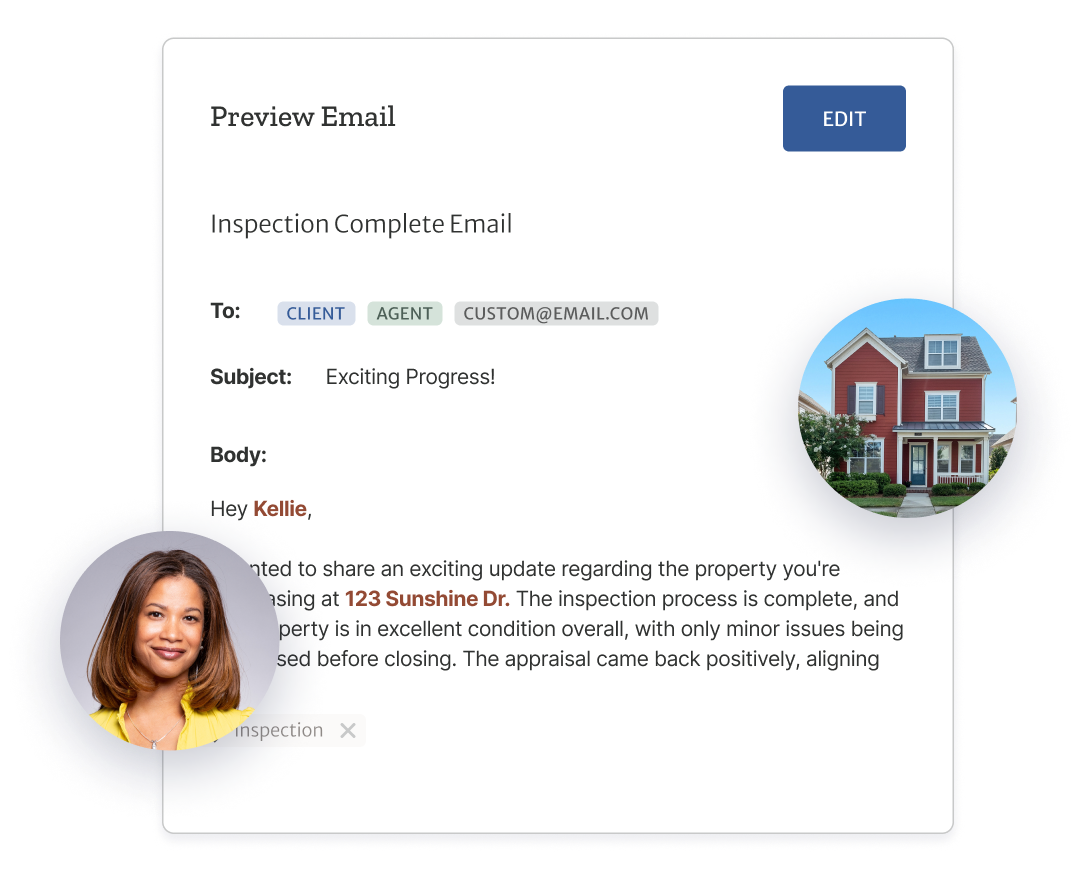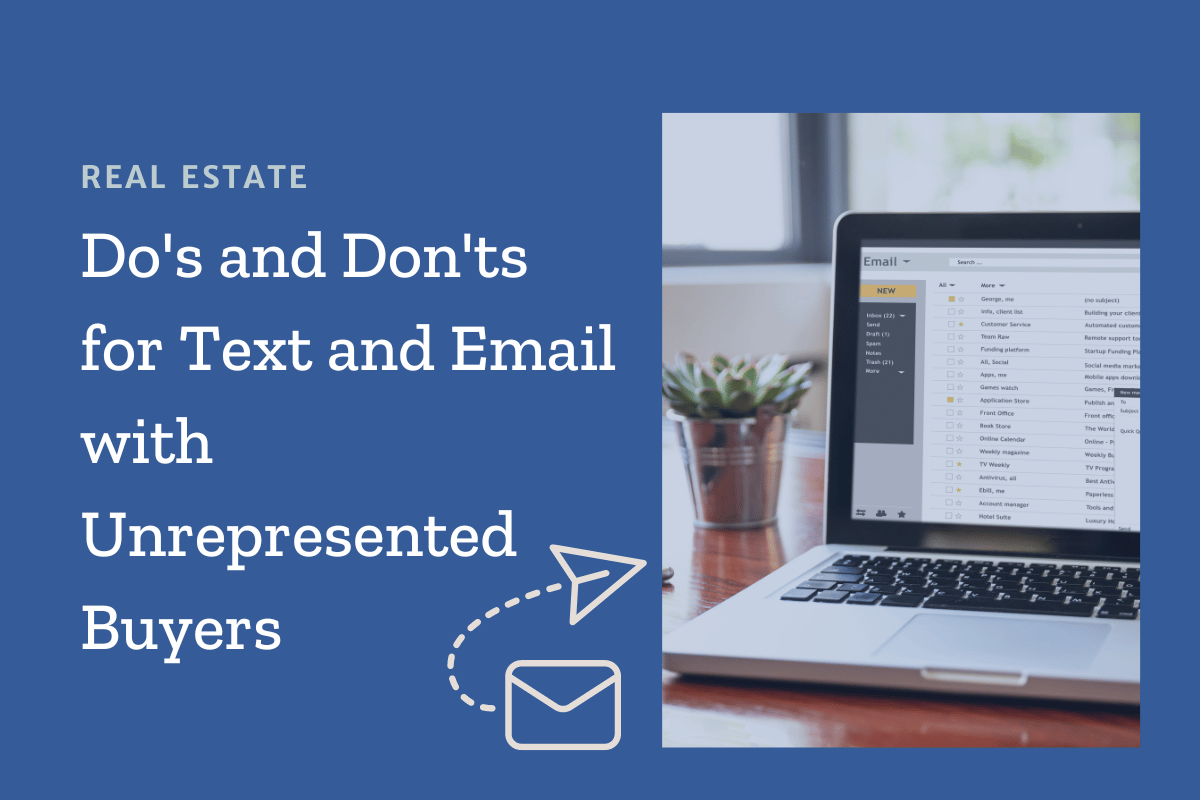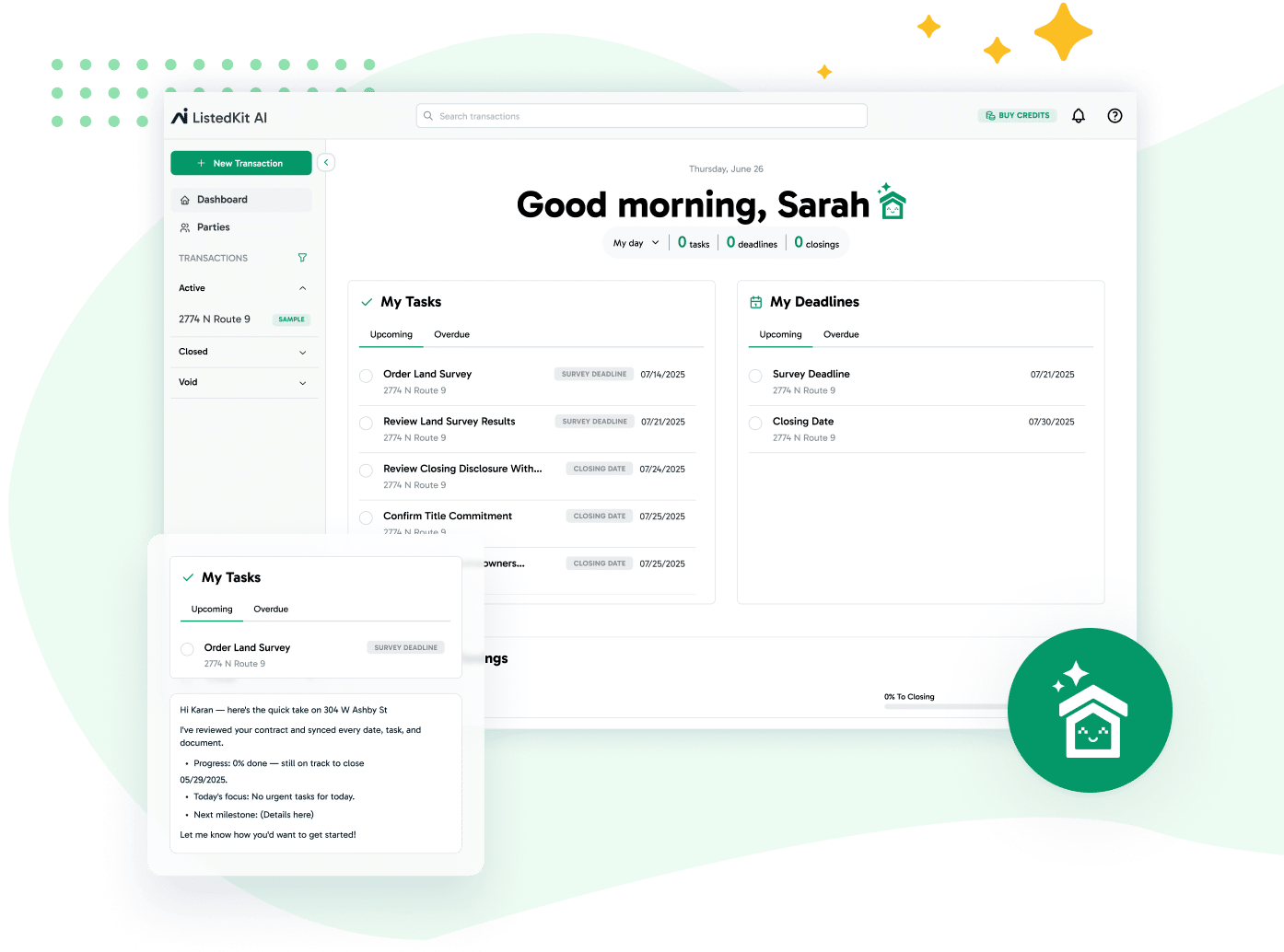We all know communication is crucial in the real estate business. But, its influence becomes greater when working with unrepresented buyers.
These buyers, being on their own and without a real estate agent to represent them, rely on clear, detailed guidance from the transaction coordinator.
Any miscommunication or lack of clarity can lead to confusion, frustration, or missed opportunities. With digital communication, especially text and email, as the new norm for real estate, keeping it professional and approachable is a must for a smooth and productive process.
This post will cover the dos and don’ts of communicating with unrepresented buyers. It also provides practical tips and real-life examples.
Importance of Clear and Professional Written Communication
Here are some of the reasons why you should communicate proactively and clearly from the start:
First Impressions Matter
Written communication is the first point of contact in real estate transactions. The professionalism you show sets the tone for the whole transaction.
For buyers, unclear messages can cause confusion, distrust or misinterpretation. Always aim for clarity to build a positive and trustful relationship.
Legal Implications
Emails and texts can later be used as evidence in disputes or legal proceedings.
As a transaction coordinator, documenting all conversations ensures accountability and a paper trail of the home-buying process.
Maintaining Efficiency
Clear messages prevent back-and-forth clarifications and reduce delays.
For example, concise emails with organized information can eliminate common mistakes like misunderstandings about house prices or the current market.
Efficient communication helps unrepresented buyers navigate the buying process. This builds trust and improves customer experience.
Do’s and Don’ts of Text Communication
Text communication with unrepresented buyers is important to a smooth financial transaction. Here are the dos and don’ts of this communication and real-life text examples.
Do’s
Be Professional and Clear: Use proper grammar and spelling. This sets the tone.
- Example: “Good morning Sam, just confirming our appointment at 2 PM tomorrow to visit the property at ABC St. Looking forward to seeing you!”
Respond Quickly: Quick replies show you care. The best response time will be within five minutes to a few hours.
Set Expectations: Tell the buyer what to expect next in the process.
- Example: “Hi Jamie, thank you for reaching out. I’ll send over the necessary paperwork for your review. After that, we’ll go over the key details, and I’ll guide you through the next steps.”
Personalize: Mention the buyer’s name and specific details to show you are paying attention.
Keep Records: Save important text conversations for future reference. It can include details about property tours or any commitments made during the transactions.
Ask Open Ended Questions: Encourage the buyer to give you detailed information about their needs.
- Example: “Hi, Sam! Can you share what stage you’re at in your home search and any questions you have about the process? This will help me better understand how I can assist you moving forward.”
Don’ts
Overloading with Information: Too much info at once can confuse the buyer.
Use Slang or Informal Language: It’s not professional.
Discuss Sensitive Topics: Don’t talk about financials via text.
Be Vague: Lack of clarity can cause misunderstandings.
Send Late Night Texts: Avoid texting a buyer at 11 PM. Respect the buyer’s personal time and boundaries.
Ignore Their Questions: Not responding can cause a loss of trust.
Spam: Repetitive messages can annoy and frustrate the buyer.
Dos and Don’ts of Email
Good email communication is crucial for independent transaction coordinators. Clear and professional emails mean smooth transactions and good relationships with clients and other real estate professionals.
Do’s
Use a Clear Subject Line
- Make your subject line simple and descriptive. So recipients can immediately know what the email is about.
- Example: Update: Earnest Money for Purchase Agreement
Keep it Short
- Write short emails. Long emails can be overwhelming, and core details can be missed.
- Use bullet points for important info.
Include Your Contact Info
- Always include your contact details at the end of the email.
- Example: If you have questions, reach me at [Phone Number] or [Email Address].
Attach Documents
- When discussing documents like purchase agreements or closing costs, make sure to attach them and provide guidelines if needed.
Use Professional Language
- Stick to formal language. This sets a professional tone and avoids misunderstandings.
- Example: “Hello Alex, I’ve attached the required documents for your review. Please let me know if you have any questions or if further clarification is needed. I look forward to your confirmation.“
Call-to-Action
- Specify the next steps or what’s required to avoid confusion.
- Example: “Please review the attached documents and confirm the sale price by Friday.”
Don’ts
Send Urgent Matters via Email
- Email may not be checked immediately. Urgent matters should be handled via phone call.
Use Informal Language
- Avoid slang and overly casual language. Keep it professional.
- Example: Instead of “Hey, just checking in,” use “Hello, I am following up on…”
Email Multiple Topics
- Focus on one subject per email to keep it clear and organized.
Forget the Unsubscribe Link
- If sending to a mailing list, always include an unsubscribe link.
Be Emotional
- Avoid taking things personally. Be patient and stay neutral and factual, even if it’s frustrating.
Good and Bad Email Examples
Good Example:
Subject: Update: Purchase Agreement and Next Steps
Hello [Client Name],
Hope you’re doing well. I have attached the updated purchase agreement for your review.
Main Points:
- The sale price is $500,000.
- Closing costs are $10,000.
Please review and confirm by Friday.
Best,
[Your Name] [Email Address] [Phone Number]
Bad Example:
Subject: This is urgent
Hey [Client Name]
Just checking in about the agreement. Get back to me ASAP.
[Name]
Following these will help you communicate effectively, professionally and clearly and manage real estate transactions.
Being Professional and Approachable
Communicating with unrepresented potential buyers in real estate is all about being formal yet friendly but not overly familiar. Anticipate their needs, and you’ll be professional and easy to approach.
Formality and Friendliness
Tone matters in real estate communication. You want to be seen as knowledgeable and approachable.
Use professional greetings and closings but not too stiff or impersonal. For example, instead of starting an email with “Dear Sir/Madam,” you could write, “Hello [Buyer’s Name], I hope you’re doing well. I’ve attached the documents for review.”
When discussing sensitive topics like broker fees or bargaining positions, clarity is crucial. Be direct but polite. Bullet points help to present information in a concise way.
Don’t Be Over-Familiar
It’s easy to fall into the trap of using overly personal language or humor that won’t translate in written communication.
Stick to professional rapport-building rather than sounding like a friend. Avoid “Hey buddy” or jokes that won’t be understood. Keeping this boundary helps to set the right expectations and keep the communication focused on the transaction.
For example, instead of saying, “Looks like we’re in for a ride!” you could say, “We have several steps ahead and I’ll walk you through them.”
Anticipate Buyer Needs
Offering solutions and explaining the next steps proactively shows empathy and understanding of the buyer’s position.
When discussing seller or participant disclosure, include the necessary information upfront to avoid confusion. Use statements like “Given your situation here’s what we recommend” to show you’re an expert and consider their needs.
Being responsive to emotional cues during this stressful process will help you build rapport with the buyer. For example, if the buyer is anxious about broker fees, reassure them by explaining why these fees are necessary and what value they bring to the transaction.
How ListedKit’s Auto-Fillable Email Templates Can Help
ListedKit’s auto-fillable email templates will save you time, allow you to customize your style, and help with documentation. These features will make communicating with unrepresented home buyers more efficient and professional.
Communication Streamlining
ListedKit’s email templates will save you time and keep it personal. Instead of writing each email from scratch, you can use a template with auto-fill options. This way, your emails will have all the necessary information without you having to remember everything.
Using these templates will keep your communication consistent. When you’re handling multiple transactions, consistency is key to avoiding mistakes. For example, the auto-fill feature can include transaction-specific details like names, dates and property addresses, which reduces the chance of errors.
Customizable to Your Style
Each template in ListedKit can be personalized to your tone and your needs. This way, your communication will feel personal and professional and reflect your style.
By adding or editing variables in the templates, you can make each email feel like it was written for that person. For example, you can include personalized greetings, specific details about the buyer’s interests, or recent conversations to make your emails stand out.
Customizable templates mean you can adapt to different situations and communication styles. Whether it’s a follow-up email or a new inquiry, the templates will help you stay professional with ease.
Documentation
ListedKit will also help you keep emails and necessary paperwork documented. It means you can refer back to previous conversations if needed. This is especially useful if you need to verify information or recall specific details from past conversations.
For example, if a dispute arises about what was discussed previously, you can find the email in question quickly. The auto organization of your emails will also make it easier to manage multiple clients and transactions without losing track of important information.
Closing Thoughts
How you communicate can calm anxiety, clarify, and prevent problems from arising. Using the right approach in texts and emails will keep you professional and the buyer feeling supported and informed every step of the way.
Leveraging transaction management tools like ListedKit will simplify your communication process and help you manage multiple conversations simultaneously. Clear communication builds trust and will keep the transaction moving without delays.

Communicate Confidently with Unrepresented Buyers
Master professional emails using ListedKit’s auto-fillable email templates.




